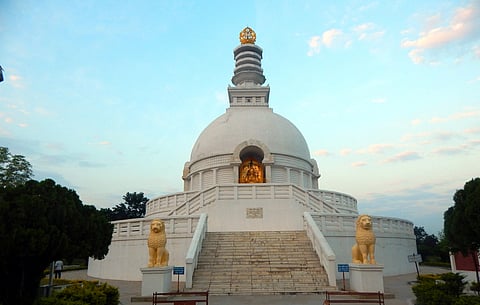
- Destinations
- Experiences
- Stay
- What's new
- Celebrating People
- Responsible Tourism
- CampaignsCampaigns
- SubscribeSubscribe
- Buy Now

The Maharashtra cabinet has recently approved a significant allocation of INR 20,787 crore for the ambitious 'Maharashtra Shaktipeeth Expressway,' a major infrastructure project aimed at enhancing connectivity across the state. This expressway will stretch an extensive 802 km, linking Pavnar in the Wardha district to Patradevi on the Maharashtra-Goa border in Sindhudurg district.
The Maharashtra State Road Development Corporation (MSRDC) is set to implement the Maharashtra Shaktipeeth Expressway project. According to officials, the Housing and Urban Development Corporation (HUDCO) has sanctioned a loan of INR 12,000 crore for the acquisition of nearly 7,500 hectares of land.
The project will traverse 12 districts, effectively connecting the eastern regions of Maharashtra with the southern Konkan coast. By streamlining travel routes, officials anticipate that the expressway will dramatically reduce the travel time between Nagpur and Goa—from the current grueling duration of approximately 18 hours down to just 8 hours. This improvement is expected to facilitate not only smoother transportation for travellers but also boost trade and tourism between these key areas, making the expressway a vital artery for economic development in Maharashtra.
The proposed high-speed corridor will cover Wardha, Yavatmal, Hingoli, Nanded, Parbhani, Beed, Latur, Dharashiv, Solapur, Sangli, Kolhapur, and Sindhudurg. This strategic route is designed to enhance connectivity and facilitate economic growth in these regions.
The expressway aims to connect all the 'Shaktipeeths' in the state and promote the development of rural areas through improved tourism and connectivity. Officials have outlined that the expressway will serve as a vital link between several important pilgrimage destinations, including Mahur, renowned for its spiritual significance, and the revered sites of Tuljapur, Kolhapur, and Pandharpur.
Additionally, the corridor will connect historically significant locations such as Ambajogai and the two famous Jyotirlingas of Aundha Nagnath and Parli Vaijnath. It will also encompass divine sites like Karanja-Lad, Akkalkot, Audumber, and Narsobachi Wadi, making it an essential route for both devotees and tourists alike. This enhanced accessibility is expected to boost local economies and promote cultural tourism throughout the region.
Amidst some local opposition driven by concerns over land acquisition, Chief Minister Devendra Fadnavis has underscored the critical need for open dialogue with local farmers and residents to address their fears and gather diverse perspectives during a recent meeting. This engagement aims to foster understanding and cooperation, ensuring community support for the project.
